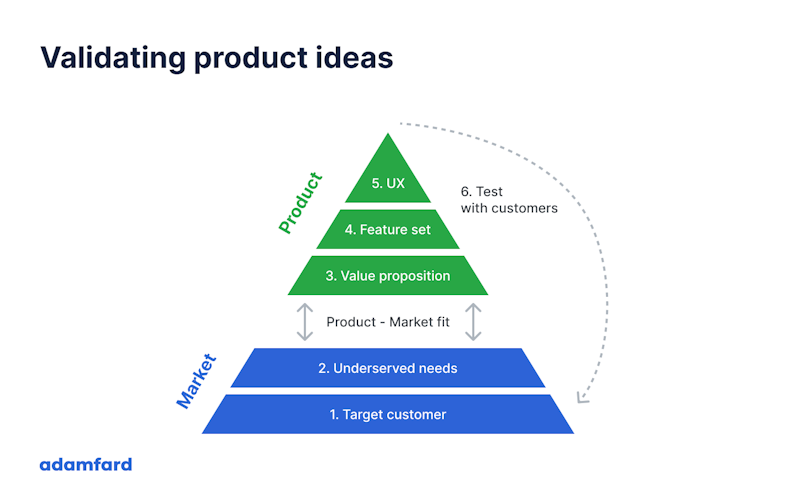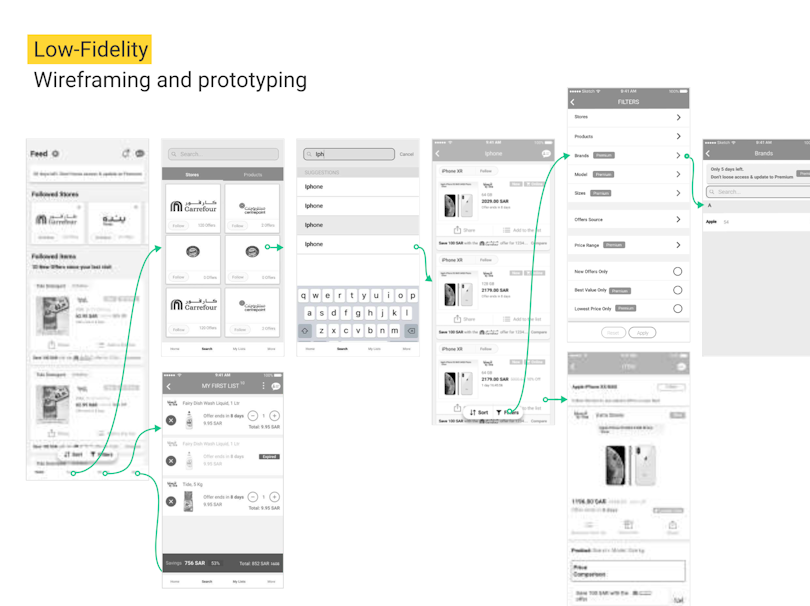New ideas are exciting. If you let yourself get carried away, it’s really, really hard to tell the difference between a good and bad one.
There’s nothing worse from a personal and business perspective than investing your time, money, and effort into an idea, only to find out no one wants it or needs it. Or, to find out everyone thinks it’s a cool idea, but it’s not necessarily something they would pay for.
There’s no shortage of bright ideas that should have succeeded but didn’t. Google Glass, anyone? Similarly, there are also many products that should have failed but didn’t. Idea validation likely played a role in both.
Idea validation can help you let go of the ideas that aren’t worthy of your time, money, and effort and move on to bigger and better things. In this article, we’ll look into idea validation. We'll explore how you can test and research ideas for your product, service, or business model.
Let’s dive right in!
What is idea validation?
Idea validation is a process where a specific product, service, or business idea is tested in various ways to determine its viability. It’s a framework to make quick, painless, and informed judgments about your idea so that you know whether it’s worth pursuing. This limits your risk of having to make costly changes to your product later on.
It answers the questions:
Does my idea solve a real problem?
Is there a place for it? Should it be done?
Can it be done?
How can it be done?
The result of idea validation is to develop a feasible prototype or MVP - both from a technical and business perspective. It also lays the foundation for a more intensive market-fit investigation, later on, to make sure it's profitable.
There’s no one right or wrong way to validate an idea. However, there are many great techniques and methodologies that can be used in specific situations. Idea validation also isn’t just for physical or digital products. It can be used to validate new logos, slogans, marketing collateral, or branding.
Why validate your ideas?
The most important reason to validate your ideas is to save time, money, and effort at an early stage, before investing too many resources. The further down the development cycle you go, the harder, costlier, and less appealing it is to claw your way back up and start over.
Another reason is to spare the world from another mediocre product. You don’t have to be the new Steve Jobs, but it’s every entrepreneur and designer's dream to come up with a product that brings real value to the world.
Like survival of the fittest, putting your ideas to the test will make sure only the worthy ones make it.
How to implement idea validation in the design process?

Before we dive deep into the intricacies of product idea validation, here’s a diagram that neatly summarizes the whole process. Don’t worry if it doesn’t make total sense right off the bat. Once you’re done reading this section, this pyramid should turn into a handy cheat sheet.
Market research
Every product design cycle should start with a robust research phase. Considering the conventional market-fit pyramid, this is where you will:
Identify your target customers
Identify underserved needs
This information is what you will use to start defining your value proposition and move on to the next levels.
Competitor research
Effective competitor research can be carried out by answering these questions:
Are customers happy with the existing solutions to the problem you want to solve?
Are competitors successful in solving this problem?
What’s the pricing or monetization model your competitors use?
Is there a way you can bring additional value to get ahead of your competitors?
The answers to these questions will tell you whether there is a gap left for your solution/idea in the first place. If customers are happy and comfortable with your competitors’ current solutions, what would make them switch over to a new one? Can you provide any significant cost savings or bring some value in another way?
For example, by adding new functionality, improving the user experience, merging with other sought-after features and solutions, or just improving the existing performance (e.g., speed, reliability, bandwidth usage, etc.). In this way, you may be able to outdo your competitors, even if they seem to have beaten you to it. You can also identify common pitfalls and plan to avoid them.
Web research
The internet is a treasure trove of cheap and easy to come by information, including from consumers via feedback and reviews. The best place to find unbiased, candid consumer data is to go to their online hangouts. For example:
Facebook groups: Look at competitors’ customers’ profiles to pull demographic info. Or, if you have a page, you can engage with them directly via chat, polls, posts and comments. Group pages dedicated to particular fanbases, products, etc. are excellent sources.
LinkedIn groups: LinkedIn has got similar ways for businesses to connect with their audiences. Here, you can find more industry-savvy input for competitors and consumers alike.
Quora: Discover questions, and answers, to literally anything. Find out what real people are struggling with, what they need, and what they are interested in.
Reddit: There are few better places for unreserved consumer feedback and discussions. There are likely already subreddits for your competitors or similar products/ideas. It’s a source of inspiration as well as to host Q&A’s and blend in with your customer base.
Personal Network and Community: As you build your personal brand and establish an active community around it, you have access to a wealth of insights, experiences, and feedback. Engage with your followers on platforms like Twitter, Instagram, or your personal blog.
Other platforms, like Twitter, Instagram, or Telegram can be equally good, depending on your customer base. The key is to identify where your audience is most likely to be and go find them.
Using this research, start developing various consumer personas and start developing customer stories around your idea.
User interviews and questionnaires
You've now traversed the wilds of the internet to learn about your users — who they are, where they come from, and what they want. Now, it’s time to source more structured data to inform your decision-making.

We’ve put together a downloadable User Testing checklist that covers this in-depth. However, some of the questions you should start to ask at this point are:
Is the problem you aim to solve an actual problem?
How do they currently solve the problem? Do they need any workarounds?
Are they satisfied with the current solutions (if any)?
What would they do to improve the current way of doing things?
Does your product idea seem like something they would be interested in?
How much would they be willing to pay for the solution you’re offering?
A mix of open-ended plus yes/no questions will give you the fullest picture. It’s also useful to try and gather data from as wide an audience as possible and there are many survey sites and social media platforms that can help you do this.
Product research
At this stage, we can think of idea validation as a kids’ pegboard. You’ve already established that there is a hole in the market and you know what shape it is. Now, you have to come up with a peg that fits that hole and solves the problem you set out to.
Prototyping and testing
A basic PoC (proof of concept) model should be designed first for internal validation. This should answer whether it can be done, i.e., is it technically feasible or possible? At this stage, user experience and design are secondary to making sure it works.
The next step will be to package this PoC in a prototype that looks, feels, and operates just enough like the end product to be user-tested. There are many different types of prototypes with different levels of fidelity.

Now, it’s time for the test-prototype-test cycle. You can start internally and iron out the most idea-breaking issues before bringing in external users. Gradually increase the complexity of the prototype and refine the design and UX until you have something approaching an MVP.
Be on the lookout for any signs that you might need to pivot your product or a specific feature. The earlier you catch and act on these signs, the better.
Launch a POC landing page
The next step is to start generating some real interest in your idea. The most obvious starting point is a website landing page that you can use to funnel interest from other platforms and start to establish your IP.
If you’re far enough along the development process, you can even launch early access or a beta version. This will give you even more accurate insights and feedback into how consumers use your product and whether it solves their problems.
Marketing a new product launch is an entire field all on its own. However, use this phase to keep validating your idea and lay the foundation for the next steps.
What’s next?
If the idea didn’t make it this far, no worries! At least you’re free to start dreaming up a new one without any serious consequences, and armed with more experience and a better understanding of the market conditions.
If it did, at this point, you should be pretty certain that you have a viable idea. You should also have a clear direction going forward with a better understanding of the market, your customers, and your intended solution.
Now it’s time to step up the development process by creating goals for an MVP, putting together a team, and secure funding.





